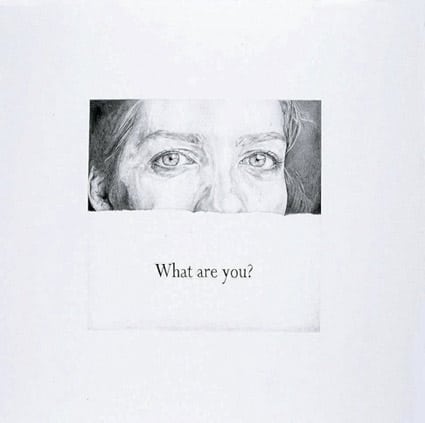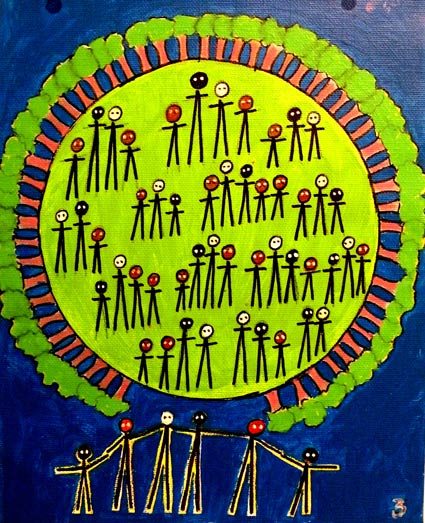From the Editors
What do postfeminism and postracialism have to do with liberation and freedom? The answer is clear: nothing — not a single thing. Postfeminism or postracialism contribute nothing to dismantling the patriarchal systems that spread across cultures and races. Or to inhibit gender violence, deliver healthcare, provide economic relief or increase abortion accessibility. The “posts” are nonmovements and they move precisely nothing forward.
The “post” terms, thrown about vigorously by pundits, send out signals that the problems of our society related to gender and race have magically flown away in an unseen balloon. Yet, race rears regularly into headlines with the small and big ripples – an African-American professor is arrested, a Latina judge is demonized, an immigrant is beaten on the street, a girl disappears but major attention will follow only if she is white. Gender concerns permeate the public sphere with unequal pay rates, sexualized commentary, rape, anti-abortion violence. The reality-based world is jammed with perplexing matters related to race and gender that demand creative resolutions.
In this edition of On The Issues Magazine, we decided to take on race and feminism, two of the most provocative social, political and cultural topics of our times. To approach the subjects with fresh eyes, we invited partners from the SisterSong Women of Color Reproductive Health Network to be Consulting Editors, and were joined by Loretta Ross, SisterSong’s National Coordinator, and Serena Garcia, Communications Director.
“Race, Feminism, Our Future” reflects the decision to put our collective consciousness into articulating ways that we can unite on the path toward social justice and equality, rather than dwell on interpersonal agitations and past histories with all of their ups and downs.
The result is a series of big-picture articles and visionary ideas. Rinku Sen, in “Taking on Postracialism,” brilliantly describes engrained institutional racism that makes the goal of a more equitable society elusive. Most Americans, she writes, “don’t see racism as a system enabled by rules and structures. They have no idea that when we lay seemingly race-neutral policies on top of the history of explicitly racist policy, the racial gap remains in place or grows.” Sen suggests that new storytelling is needed to help people break through structural-blindness.
In “To Stop the Gender Violence, Start Changing the Tune,” Andrea Smith takes up a topic that affects women across racial, class, ethnic and cultural boundaries: violence. Gender violence is a frequent topic in On The Issues Magazine, both as a print publication (1983-99) and an online publication (2008-on). In 1990, Merle Hoffman, publisher and editor-in-chief, wrote: “There is no honor in a society that brutalizes women and denies them the fundamental human right of living without sexual violence – just as there is no honor in a society that inflicts racist violence against Black people and discriminates against millions of its citizens because of the color of their skin.”
In this edition, Smith, a scholar and activist, notes how much still needs to be done to end gender violence. Today’s mainstream anti-violence programs could benefit from adopting newer community-oriented strategies that women of color groups are creating to deal with both violence against women and the violence of aggressive police actions that devastate communities of color. “It is a problem that requires a political organizing solution, one that focuses on transforming society so that it no longer condones violence,” writes Smith.
Eleanor Bader describes a teaching model that helps youth think through difficult social problems, and Graciela Sanchez writes poetically about an arts program that uses photography to help women break free from isolation and become activists. Eesha Pandit articulates the necessity of incorporating a strong reproductive justice perspective in national healthcare, while Suzanne Pharr and Jacqui Patterson look at unifying themes for progressives in economic stimulus and climate change policy. Betsy Hartmann discusses how new population explosion claims are replaying racist narratives. Loretta Ross takes apart the language of right-wing groups that deploy darts of anger in undertones, and Serena Garcia breaks down the distortion of attacks on “wise Latina” Justice Sonia Sotomayor.
In book reviews, Book Editor Christine E. Hutchins looks at a new book by Dutchess Harris on Black feminist activism in the 40 years following President Kennedy’s election. Reviewer Courtney Zedner describes the book release by the very contemporary spoken word artist, Staceyann Chin, who defies the use of categories in her invigorating stagework seen in a featured video.
In areas in which it is often difficult to find the right words, artists in this edition share humor and pain in response to race and feminism. Faith Ringgold, the featured artist selected by Art Editor Linda Stein, is known for her vast and impressive body of work with paint, quilted fabric and storytelling. In “How the People Became Color Blind and We Came to America,” Ringgold personally narrates an illustrated story, imagining the world without skin color variations. Poets Marian Cannon Dornell and Cheryl Clarke, selected by Poetry Co-Editor Clare Coss for The Poet’s Eye delve into history, where women find escapes from harsh and difficult times. Other acclaimed artists share their work throughout the online magazine, including Emma Amos, Natalie Frank, Janet Goldner, Gloria Hollwerda-Williams, Gwyneth Leech, Helene Ruiz and Taryn Wells.
We will also continue to build on this rich assemblage of articles, poetry and art. Natalie Bell will report back as a special correspondent for the national SisterSong Conference in Washington D.C. in early November. Our unique Café will highlight additional perspectives – such as Maame-Menisme Horne’s writing about reproductive oppression and black anti-abortionists and Angela Poh on Chinese heroines in folk tales. And more.
Collecting these incisive materials also raised questions, some on language and style: is “Black” or “black” more appropriate? And “White” or “white”? In the end, we decided to leave those decisions to the individual authors.
We look for your opinions, too. Send us your ideas and thoughts to [email protected]


